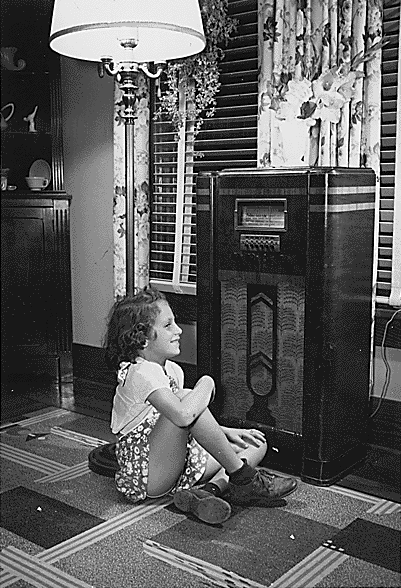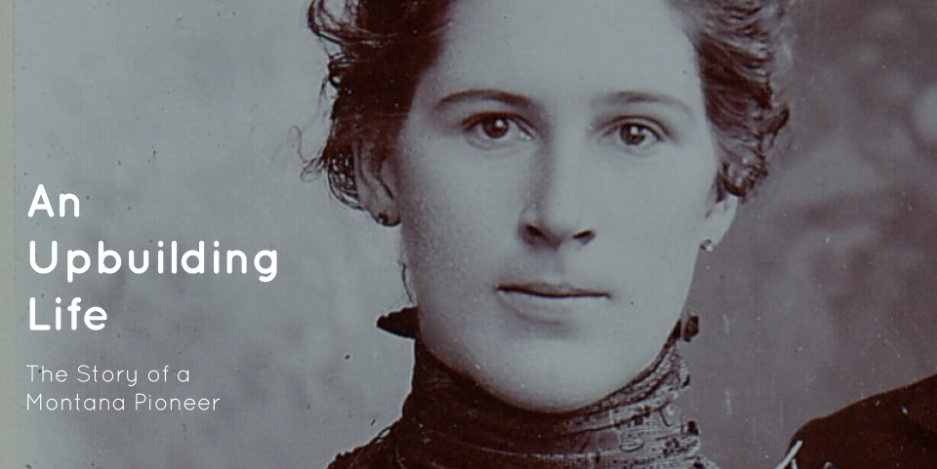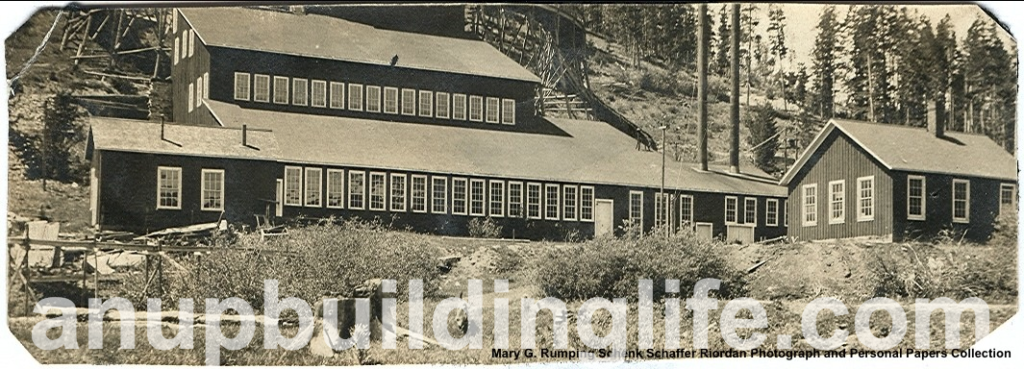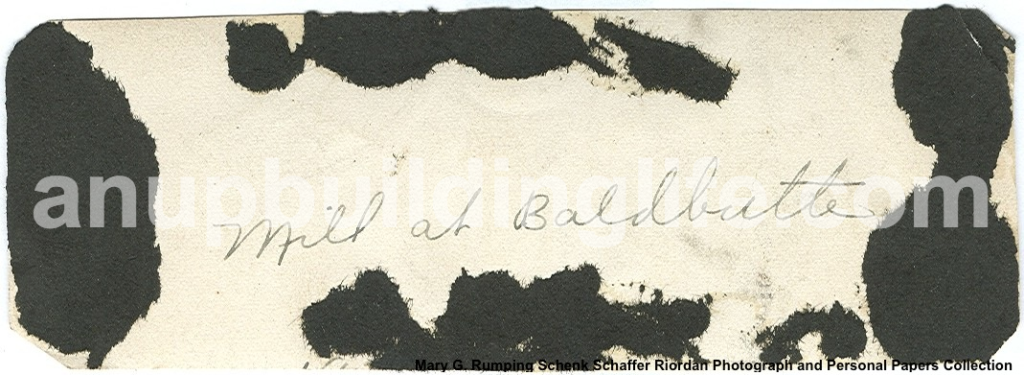Located southwest of Marysville, the Bald Butte Mill processed ore beginning from the nearby Devon/Sterling and Albion Mines, commonly referred to as the “Bald Butte Mines”. [1]
Bald Butte
“Read over KGIR Butte, Mont. on March 30, 1946”

Belmont-Montana: Written by Mrs. M. Schaffer Riordan
This picturesque and rich gold mining camp is a big flat– surrounded by the lofty Rockies and about a mile west of Marysville around the bend. It is about forgotten by many pioneers and not known of by the younger generation of today; even those living at Marysville.
My father, Mr. John H. Rumping, left St. Louis, Mo. for western adventure in 1878 coming by boat, the Fontenelle1, to Ft. Benton, Montana. He helped as an engineer. They were sent part way back from Indian attacks, but they buckled up and came on again to Ft. Benton. From there, he took the covered wagons and helped going over mountains and prairie lands where Great Falls now is built, on to Silver City, Montana and up Silver Creek to Belmont over roads built on the mountain sides2.
Mr. J. Rumping helped build the Belmont mill in 1878-79. A fire later broke out on the entrances of the mine smothering seven miners3. The town had hundreds of miners, a store and a couple of saloons. The store was owned by Mr. Henry Jurgens and Price. They later moved down to Marysville and Mr. George Padbury Sr. of Helena was the clerk and delivery boy. The tunnel had its blacksmith shop and forge at its entrance. Jurgens was sheriff in Helena 1896.
Mrs. Eva Rumping, John’s wife, came from St. Louis in 1879. I, the first child, was a year old when she left. We were three months on the way coming to Belmont June 7th, 1879. Ed Conrad of Helena, my brother John Joseph (born in Belmont in 1881, he lives in Helena) and myself, are the yet living survivors of Belmont. John Joe Rumping was born in Belmont Mar. 19, 1881.
Belmont was found by Mr. Ed. Stemple, Sr. There were two or three rasters (water wheels) along the creek from the mine.
Later Thomas Cruse, another miner of adventure, came from Ireland, around the Horn to Australia, then to Marysville, California and on to the new gold fields of Montana, on a beautiful black horse, stopping at Silver City first. It was the first town built in now Lewis & Clark County.
Holburt discovered gold bars at Prickley Pear gulch 1862, Aug. 18th, which built Silver City to 150 members. William Brown, William Meagher, Edgerton and others. The first seat of Justice was here. Henry Jurgens and Courtands opened a store April 18, 1884. Rich placer diggens were taken up in 1864-65. It was first known as Edgerton, then Silver City.
Jacob Fournais was its first settler. Indian squaws were married to some miners. Cruse came up Trinity gulch into Belmont and the place later called Marysville.
Mr. George Detweiler, a prospector, also came and had partly located & found rich float, but he went to the first Fair at Chicago and asked Cruse to finish locating it for him. But on his return, Cruse located it in his name. Detweiler is buried at Marysville. Mr. Rumping was the first engineer at Cruse’s five-stamp mill.
Mr. and Mrs. Lightbody had the first boarding house. Other eating houses were Sampson’s, Peterson’s, Schaffer’s and Drum Lummond.
Cruse sold his mine to an English company and they called it the Drum Lummond Co.
Buschline Hotel, Drum Lummond Hotel, Masculine Hotel.
Ralstons came over Trinity early too and built the first two-story log house that still stands in the other new camp below Belmont. Thomas Cruse then named the new bonanza “Marysville” after Mrs. Mary Ralston. It came to be the richest, happiest and most contented town in Montana.
On June 13, 1901-2, Mr. Frank Hauley, who now is a hoisting engineer at the Steward mine in Butte, and my first husband, Mr. George Schenck, drilled 27 1/8 and 31 7/8 inches in ten minutes and would drill anyone in Montana their weight of 145 lbs. 31 7/8 was the deepest ever drilled at Marysville by George Schenck and Frank Hauley.
All that’s left of Belmont now is the two old Longmaid buildings the miners used and the Montana Power Plant of Great Falls. Later Marysville went down for some years but is now being revived by Mr. Wade and a new mill that was built in 1944-45 soon burnt down.
Belmont had Bald Mt., Gloster, Empire, Towsley, Penobscot on the other westerly slopes. Bald Butte, Mt. Pleasant, Carter & Aickie are good mines played out.
Silver City was Montana’s first capital for a short while and George Detweiler finally owned the beautiful pearl handled revolver that was used as a gavel at its meetings and donated it to Mr. O. M. Lanstrum. Silver Creek had its Chineymen working the gold diggens and I remember their nice gardens.
In 1878-79 Marysville had beaver swamps and the road left the gulch and went up the mountain side behind Fabien and Snablins’ cabins (bought by Mr. Rumping about 1885, where my brother William and sister Maude later were born), and on up to Highland Street up to the mountain side again and on over the mountain side to Belmont.
The typewritten copy of the story was followed by this note:
This is more than I put in my story for K.G.I.R. radio station in Butte.


